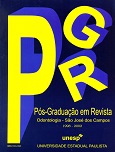Prevalence of missing teeth in adolescents and young adults
DOI:
https://doi.org/10.14295/bds.2001.v4i2.113Abstract
Estudos epidemiológicos têm demonstrado que a prevalência de cárie e doença periodontal ainda é elevada em alguns países em desenvolvimento, embora mostre uma tendência geral de declínio. Nestes países o tratamento para doença periodontal avançada e cárie dental é ainda a extração do dente O objetivo do presente estudo foi determinar a prevalência de dentes ausentes em uma população de adolescentes e adultos jovens.. A população estudada compreendeu 321 indivíduos que procuraram tratamento dentário na Clínica Odontológica da Universidade de Taubaté, em Taubaté, estado de São Paulo. Os participantes do estudo tinham entre 15 e 25 anos de idade (19.51 ± 3.21 anos), e pertenciam a 3 grupos étnicos: Negro, Branco e Pardo. Foram conduzidas entrevistas afim de se determinar a história média e hábito de fumar dos participantes. Indivíduos com problemas sistêmicos sem acompanhamento médico regular foram excluídos deste estudo. O exame bucal completo foi conduzido por um único examinador, e a perda dentária foi registrada para cada participante, de acordo com os critérios propostos pela Organização Mundial de Saúde/WHO (1997) excluindo-se os terceiros molares. Setenta porcento das mulheres e 65% dos homens haviam perdido um ou mais dentes. O número de dentes perdidos variou de 1 a 21. A média de dentes ausentes para o grupo estudado foi 2.4. A perda dentária mostrou correlação positiva com a idade (r = 0.88). Os primeiros molares inferiores apresentaram a maior freqüência de perda (42%), e os caninos inferiores a menor freqüência (<1%). Estes resultados sugerem que na população estudada a perda dentária representa um problema de saúde bucal significativo.
Downloads
Downloads
Published
How to Cite
Issue
Section
License
Brazilian Dental Science uses the Creative Commons (CC-BY 4.0) license, thus preserving the integrity of articles in an open access environment. The journal allows the author to retain publishing rights without restrictions.
=================




























